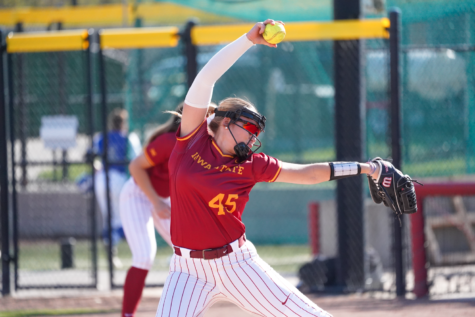MLB woes threaten game
July 9, 2002
Major League Baseball is in trouble. It’s not in trouble because of the speculation of juiced balls, nor is it because the pitching is diluted due to expansion.
MLB is in trouble because it risks alienating the millions of fans who pay the multi-million dollar salaries of the players and line the owners’ pockets with wads of cash.
Case in point: The pitchers for the all-star game Tuesday night are dropping like flies. Three more hurlers selected to play in the game have decided not to, bringing the total to four. Those dropping out are guys with names like Glavine, Martinez, Johnson and Morris.
A couple of these guys seem to have valid excuses. Tom Glavine has a blister on the index finger of his pitching hand, and throwing a slider or a change-up with a blister isn’t exactly fun. Matt Morris, the only representative from the Cardinals, is at least making the trip to Milwaukee to sit on the bench despite being hampered by minor back spasms. That’s more than can be said for the other two.
Randy Johnson and Pedro Martinez, arguably the two best pitchers in their respective leagues, both declined to make the trip to Milwaukee due to personal reasons. Johnson said he wants to rest and focus on getting ready for the second half.
Give me a break. If Johnson were hurt that’s one thing, but he insists he’s not.
When did the All-Star Game cease to be a real game and become something players can blow off on a whim?
The All-Star Game used to be a knock-down, hard-nosed, kick-your-teeth-in fight between the two leagues for bragging rights. Now it has become a lazy exhibition/holiday for the players. If players like Johnson are so concerned about getting ready for the second half that they don’t have time to give back to the fans who buy the tickets, why not do away with the break altogether? The rest the players get is an added bonus, not the reason for the three-day break from the regular season.
It’s not like Johnson or Martinez are going to have throw seven innings. The fans pay their money to see classic showdowns between the best pitchers and great hitters. This year however fans won’t get the opportunity to see Pedro challenge Bonds or the Big Unit face-off against Alex Rodriguez.
Sammy Sosa is making the trip to Milwaukee in spite of his wife having surgery Monday after injuring her hand. More players should take note of the examples set by Sosa.
Players not showing up for the All-Star Game is only the tip of the iceberg though.
Talks of a possible strike threaten to shake the baseball world down to its very roots. McGwire and Sosa’s slugfest in 1998 injected, (no pun intended) some life back into baseball after thousands of fans turned away in disgust after the last strike in 1994. That strike marked the first season without a World Series since 1904. Even the home run race couldn’t bring back all the fans though and a second strike in less than a decade would likely turn many fans, other than the most die hard, away from the game permanently. Instead of attendance dropping by an average of 6,000 fans per game like it did after the `94 strike, 6,000 could potentially be the total attendance at games in 2003.
Drug testing is another potentially contentious issue between players and owners that could play into the strike scenario. Statements by Jose Canseco and Ken Caminiti earlier this year and the surge in home runs in recent years have fueled speculation as to just how many major league players are taking performance enhancing drugs. A recent survey by USA Today indicated, however, that 79 percent of the players would agree to independent drug testing.
What exactly is the strike all about anyway? Did management decide to give the players gold-plated instead of 24-karat syringes? Not exactly, but it might as well be about that. Many of the same issues are rearing their ugly heads again. Selig wants to slow down the astronomical rise of player salaries by instituting a luxury tax on payrolls over $98 million and he wants to force large market teams (aka the New York Yankees) to increase the percentage of local revenue they share with small market teams from 20 percent to 50 percent. The players, for obvious reasons, don’t want salary increases to slow down. It’s like a whiny teenager complaining because his parents won’t let him trade in the BMW for a Ferrari.
It’s not entirely the players’ fault though. Most fans aren’t exactly sympathetic to either side. They find it difficult to believe that billionaire owners are being taken advantage of by multi-millionaire players or vice versa. A strike this year would mark the ninth time there has been a labor dispute. Compromise is a fact of life and it is ludicrous the players’ association and the owners can’t meet halfway.
I think I have the solution however, courtesy of Jeff Kent and Barry Bonds. After the heavily publicized dugout scuffle between the MVP teammates, both proceeded to go out and hit home runs in the game and they have both been on fire ever since. So why not schedule a nine-round pay-per-view bout between Commissioner Selig and players’ association head Donald Fehr. Kent and Bonds were able to work out their differences that way and get on with the business at hand. Maybe after their bout Selig and Fehr can too. Then they could use the proceeds from the fight to help small-market teams catch up to the Yankees and other large-market clubs.
Mike Nichols is a senior in political science from Lincoln, Neb.
















